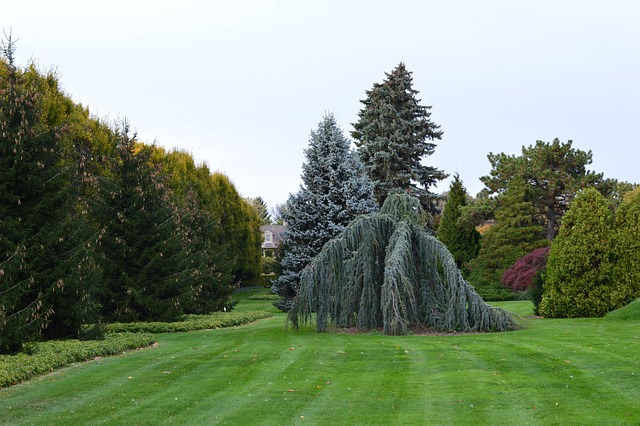People of all ages have long found gardening to be a popular pastime. We may cultivate our own fruits, veggies, and flowers, and it also gives us a chance to establish a connection with the natural world. Traditional gardening techniques can be difficult, though, particularly for people with small spaces or poor soil. Planters for raised garden beds come in handy in this situation.
Plants can be grown above ground thanks to elevated beds known as raised garden bed planters. In essence, they are boxes or other containers that are topped with soil after being filled with it. For both seasoned and inexperienced gardeners, these planters have a lot to offer and have the potential to revolutionize gardening forever.
Benefits of using raised garden bed planters
Raised garden bed planters have superior drainage, which is one of its main benefits. Raised garden beds have better drainage systems than regular gardens, where water often collects and causes root rot. This keeps your plants from getting too wet and guarantees that they get just the appropriate quantity of moisture.
You can use any kind of soil you’d like to utilize with raised garden bed planters. This implies that you can construct a unique soil mixture to meet the requirements of your particular plants. Raised beds also typically have less compacted, more rich soil, which promotes healthier plant development.
Every gardener detests weeding since it is a laborious process. Weed control is made lot easier with raised garden bed planters. You may stop weed seeds from blowing in and taking root by raising your plants above the ground. By doing this, you can keep a weed-free garden with less time and work.
Raised garden bed planters’ accessibility is yet another important benefit. People with physical disabilities or mobility challenges can enjoy gardening more easily since the higher height of the planters avoids the need for bending or crouching. This lessens the tension on your knees and back, enabling you to garden more easily for extended periods of time.
Raised garden beds provide a certain degree of pest protection. You may reduce the likelihood that pests like slugs, snails, and ground-dwelling insects will overrun your garden by lifting your plants off the ground. For added protection against animals, you can erect physical barriers like fencing or netting around your plants.
Types of raised garden bed planters
Wooden raised beds: Because of their inherent beauty and toughness, wooden raised garden beds are a popular option. A variety of woods, including pine, redwood, and cedar, can be used to make them. Because it doesn’t degrade and attracts insects, cedar is highly preferred. These beds are adaptable to many garden configurations because they may be made to any size or form.
Metal raised beds: The durability and lifespan of metal raised garden beds are well-known. They are usually composed of rust- and corrosion-resistant materials, such as aluminum or galvanized steel. Metal beds are ideal for urban settings or those with little garden space since they give your garden a sleek, contemporary appearance.
Raised garden beds made of plastic: These raised beds are inexpensive and lightweight. They are simple to assemble and frequently constructed from recyclable materials. Plastic beds require less upkeep and are resistant to inclement weather. They are a fantastic choice for novice gardeners or those looking for an inexpensive gardening solution.
Bricks or concrete blocks: Raised garden beds can also be made with bricks or concrete blocks. They offer a reliable framework that endures throughout time. To guarantee adequate drainage, it’s crucial to leave spaces or holes in the blocks. Concrete beds need to be built with some work because they are a permanent option.
How to choose the right raised garden bed planter for your needs
There are a few things to take into account while selecting the ideal raised garden bed planter:
- Size and space: Measure the area in your garden that is available, then select a planter size that suits your requirements. Think on how many plants you want to grow and what kind of plants they need to grow.
- Material: Choose a material that complements both the design of your garden and your personal tastes. While metal and plastic beds add a contemporary touch, wooden beds have a more organic appearance. Take into account each material’s maintenance needs and longevity.
- Height: Choose the height of your raised garden bed according to the kinds of plants you wish to grow and your demands for accessibility. A taller bed might be required for certain plants that need the deeper soil.
- Cost: When selecting a raised garden bed planter, take your budget into account. Price points vary depending on the materials and sizes. Decide how much you are willing to spend and make your decision appropriately.
- Maintenance and assembly: Determine how simple it is to assemble and maintain each kind of planter. Some may be more labor-intensive to create or require more frequent upkeep than others.
Best plants and vegetables for raised garden bed planters
Tomatoes:
Because elevated garden beds have better drainage and soil quality, tomatoes do well there. For smaller beds, go with determinate or compact types; for taller beds, choose indeterminate kinds.
Leafy greens:
Raised garden beds are an excellent way to grow lettuce, spinach, kale, and other leafy greens. They are easily harvested as needed and have shallow root systems.
Herbs:
For raised garden beds, herbs like mint, thyme, rosemary, and basil work well. They grow well in cramped areas and add vibrant flavors to your food preparations.
Root veggies:
Raised garden beds are a good way to cultivate vegetables like carrots, radishes, and beets. Make sure the depth of your bed is sufficient to support the growth of the roots.
Strawberries:
Strawberries are a popular choice for raised garden beds. They can be grown in containers or hanging baskets within the raised bed, maximizing space utilization.
Maintaining and caring for raised garden bed planters
- Watering on a regular basis: Check the moisture content of your raised garden bed and add water as necessary. The amount of water your soil can hold and the weather will determine how often you water it.
- Weed control: Use organic weed control techniques or pick weeds out of your raised garden bed on a regular basis. Mulching can aid in inhibiting the growth of weeds.
- Fertilization: To restore nutrients to the soil, apply compost or organic fertilizers. Pay attention to the dosage amounts advised for the particular plants you are cultivating.
- Pest control: Frequently check your plants for indications of pests or illnesses. To manage pest populations, use organic pest control techniques like hand-picking or importing beneficial insects.
- Seasonal upkeep: Clear up your raised garden bed and get rid of any leftover plants at the conclusion of each growing season. This gets the bed ready for the upcoming season and helps stop the accumulation of pests or illnesses.
DIY raised garden bed planter ideas
Make raised garden beds by repurposing wooden pallets. Just take out the bottom slats, add soil to the pallet, and fill the spaces with the plants you want to grow.
Build a durable and reasonably priced raised garden bed by stacking cinder blocks. To provide room for plants, dirt can be poured into the spaces between the blocks.
Create a distinctive raised flower bed by painting and stacking old tires. Put soil inside each tire and plant your preferred vegetables or flowers.
Wine barrels can be used as raised garden beds by cutting them in half. They are ideal for cultivating herbs or small plants and give your yard a rustic appeal.
Raised garden beds made of straw bales: To make an elevated garden bed, arrange straw bales in a rectangular pattern. Direct planting of the bales offers a short-term gardening fix.
Where to buy raised garden bed planters
Garden centers:
To get an extensive selection of raised garden bed planters, stop by your neighborhood garden centers or nurseries. You can get advice and assistance from the specialists in selecting the ideal planter for your requirements.
Online stores:
A variety of raised garden bed planters are available from numerous online retailers who specialize in gardening goods. Before making a purchase, go through their options, read client testimonials, and compare costs.
Home improvement stores:
Especially in the planting season, raised garden bed planters are frequently seen in home improvement stores. For a variety of possibilities, look through their garden section.
DIY stores:
These can supply the supplies and equipment needed to construct your own raised garden bed, if that’s your preference. They frequently offer pre-cut metal or wood parts for sale.
Conclusion
For anyone wishing to improve their gardening experience, raised garden bed planters are an excellent option. They have many advantages, such as better accessibility, better drainage, and increased soil quality. You can have a gorgeous garden and a plentiful harvest by selecting the appropriate kind of planter and adhering to gardening advice. The options for raised garden bed planters are virtually limitless, whether you choose to build your own or buy a pre-made one. So use these creative ideas to uncover the mysteries of productive gardening and experience the delights of increased abundance.

